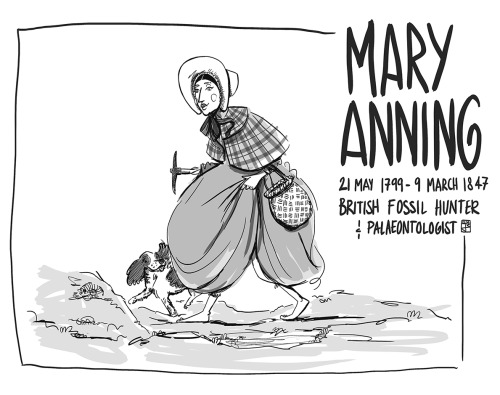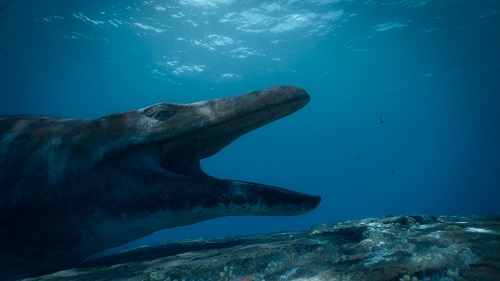Editor’s Note: This post is the first in a series featuring influential women from STEM (Science, Technology, Engineering and Math) fields in the lead up to HMNS’ annual GEMS (Girls Exploring Math and Science) event, February 21, 2015. Click here to get involved!
 In the early 1800s, discoveries made by Mary Anning greatly expanded the field of paleontology and shed light on many previously undiscovered prehistoric creatures. Born in 1799 to a lower class family, Mary and her brother Joseph grew up wandering the shores of Lyme Regis, England looking for all sorts of fossils. After her father died in 1810, Mary’s fossil hobby became the source of income for the Anning family.
In the early 1800s, discoveries made by Mary Anning greatly expanded the field of paleontology and shed light on many previously undiscovered prehistoric creatures. Born in 1799 to a lower class family, Mary and her brother Joseph grew up wandering the shores of Lyme Regis, England looking for all sorts of fossils. After her father died in 1810, Mary’s fossil hobby became the source of income for the Anning family.
The first major find for the Anning family was a skull of what appeared to be a prehistoric crocodile. Mary’s brother Joseph discovered the skull in 1810, and after a year of meticulous searching, Mary discovered the rest of the skeleton in 1811 at age 12.
The fossilized remains were not from a crocodile as previously thought. In fact, they were remains from a new ocean reptile species which museum scientists named Ichthyosaur. Mary is credited with finding the first Ichthyosaur specimen acknowledged by the Geological Society of London. Her discovery led to discoveries of other Ichthyosaurs in Germany including one nicknamed “Jurassic Mom” which is on display at HMNS in the Morian Hall of Paleontology.
But Mary’s contributions to Paleontology didn’t stop there!
In 1823, Mary discovered another ocean reptile named Plesiosaurus. This long-necked ocean reptile had flippers and a skull with sharp interlocking teeth. Her findings showed that the Jurassic seas were filled with all types of sea monsters and things that they left behind. Anning was able to deduce aspects of the Ichthyosaur diet by finding fossilized Ichthyosaur feces containing fish scales, squid suction cups, and belemnites. In addition to her ancient sea life discoveries, Anning also uncovered the first pterodactyl found outside of Germany.
Over the course of her life, Mary discovered several species of Ichthyosaur and several complete Plesiosaurus skeletons among other fossilized remains. She sold these fossils to numerous museums and private collectors.
Unfortunately, due to her social status,Anning was not credited for many of her discoveries during her lifetime. However, before her death in 1847, Anning became the first Honorary Member of the New Dorset County Museum, and today she is still recognized today as one of the great female contributors to Paleontology!
HMNS is highlighting females that made contributions to STEM fields leading up to our annual GEMS (Girls Exploring Math and Science) event, February 21, 2015!
Although Mary Anning did not have much formal education, she taught herself geology and anatomy to help her find and identify fossils. Her enthusiasm for education helped her expand the knowledge of ancient ocean reptiles.
Girls Exploring Math and Science (GEMS) is an event that showcases some of the great things girls do with science, technology, engineering and math! Students can present a project on a STEM related subject for the chance to earn prize money for their school.
If you, or a student you know is interested, apply for a student booth today!
Want to know more about the wonder women of STEM?
Click here for the second post in the series, Wonder Women of STEM: Ada Lovelace, 19th century programmer.










